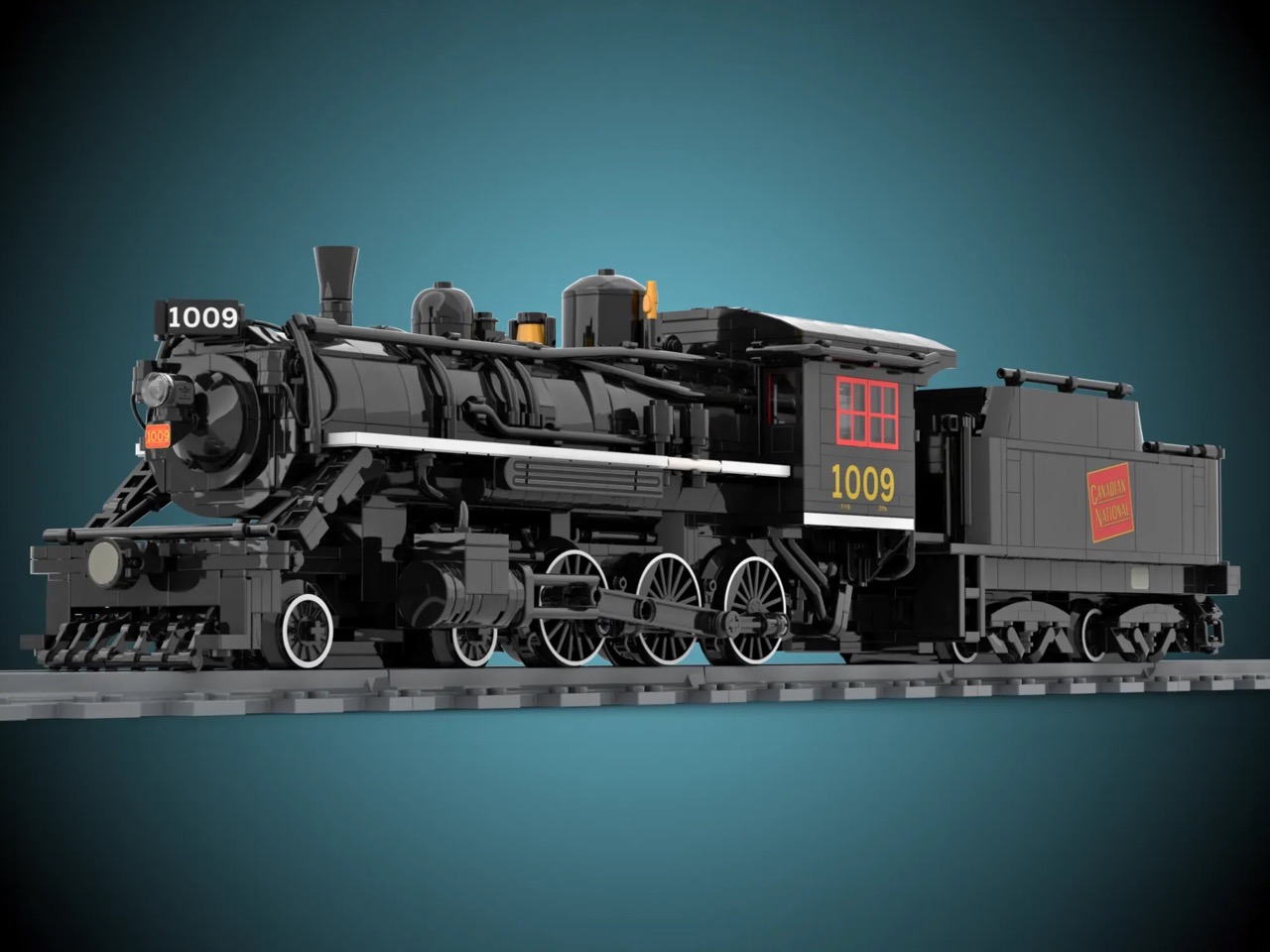
So here’s the thing about steam locomotives: they’re basically the industrial revolution’s answer to brute-force engineering wrapped in a romantic, soot-stained package. And when someone nails a LEGO version of one, especially a niche historical piece like the Canadian National 1009, it’s worth pausing the doomscroll to appreciate the sheer audacity of it. This isn’t some generic Thomas the Tank Engine knockoff. We’re talking about a 4-6-0 ten-wheeler, a workhorse built in 1912 by Montreal Locomotive Works that spent decades hauling everything from freight to tourists before retiring to museum life. The fact that a fan-built LEGO Ideas project now captures its essence down to the boiler rivets and tender ladder? That’s the kind of obsessive craftsmanship that makes train nerds and LEGO purists equally giddy.
The real 1009 had a working life that spanned construction duty, revenue service, and even a brief Hollywood cameo in Paradise Siding before retiring to museum life. Its LEGO counterpart, clocking in at around 1,500 pieces, doesn’t just mimic the look; it nails the functional vibe too, with moving side rods, a detailed cab, and a tender that actually looks like it could haul coal instead of just sitting there. The builder’s attention to the wheel arrangement, the proportions of the boiler, and even the tiny red-framed cab windows proves this isn’t some half-baked fan render. It’s a proper homage, the kind that makes you wonder why LEGO’s official train lineup has been stuck in a creative rut for years while fan designers keep raising the bar.
Designer: Olivier312
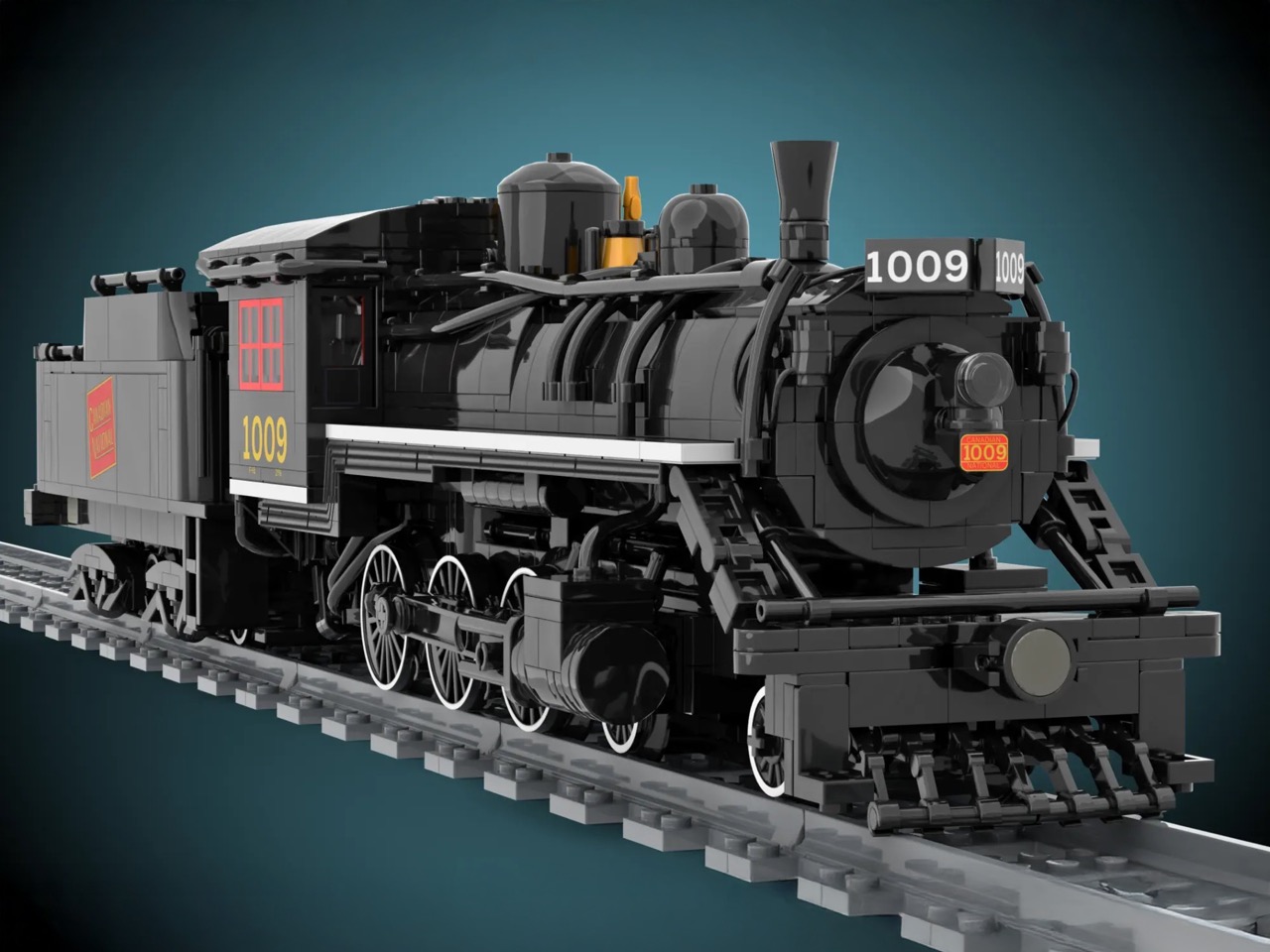
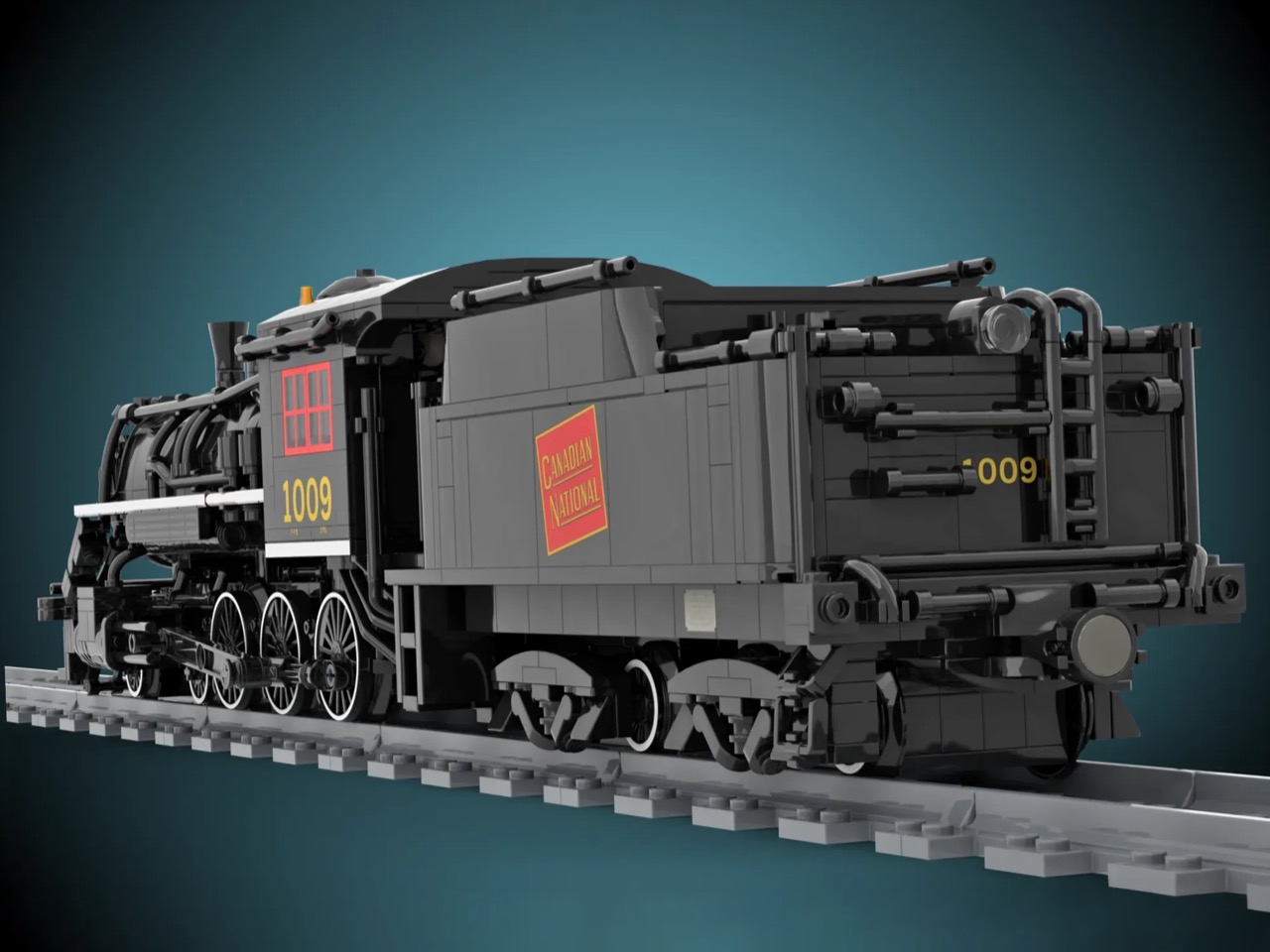
The 4-6-0 wheel configuration, four leading wheels for stability, six massive drivers for power, and zero trailing wheels, is a setup that defined an era of North American railroading. The LEGO version replicates this faithfully, using LEGO’s own train wheel assemblies to ensure it can actually run on standard LEGO track. The boiler is a masterclass in part usage, blending curved slopes and cylindrical pieces to avoid the blocky, angular mess that plagues lesser train builds. Even the piping along the sides, often an afterthought in LEGO models, is executed with thin rods and clips that mimic the real thing’s plumbing without looking cluttered. And yes, the smokestack and domes are properly scaled, not just slapped on as oversized lumps because “close enough” isn’t in this builder’s vocabulary.
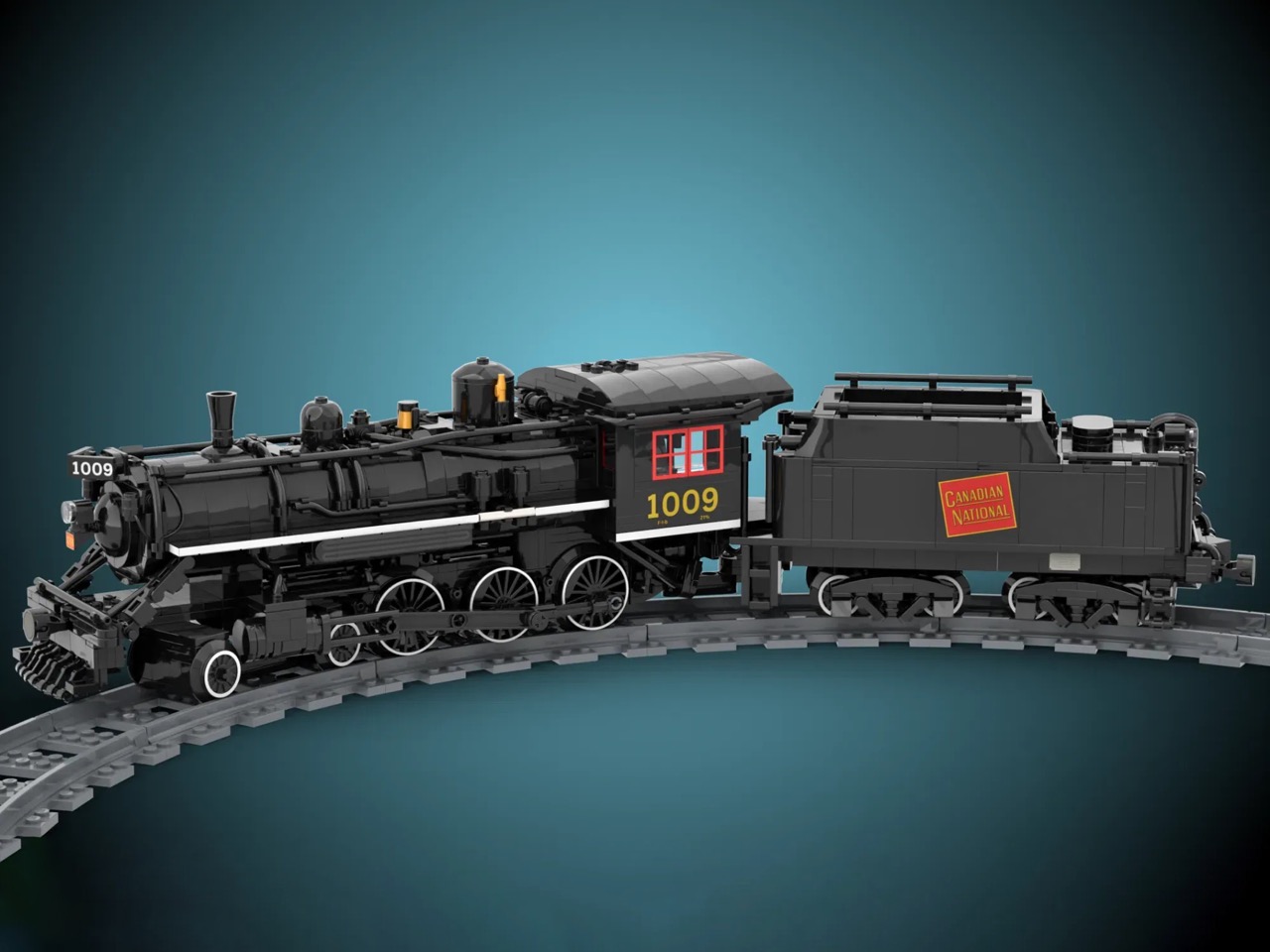
The 1009’s personality lies in its cab design. The red-framed windows, a signature detail on the actual locomotive, are recreated here with transparent red pieces bordered by black tiles, a small touch that adds massive character. The number 1009 is placed exactly where it should be, on the cab sides and the front pilot, using stickers or printed tiles (the images aren’t clear on which, but either way, it’s the right call). Inside, there’s even a hint of an interior, though LEGO’s limitations mean it’s more suggestive than detailed. Still, it’s more than most official LEGO train sets bother with. The tender, often an overlooked appendage in LEGO builds, gets its due here too, with proper coal-hopper shaping, a ladder up the back, and that unmistakable Canadian National logo in red and yellow. It’s the kind of detail that separates a good build from one that feels alive.
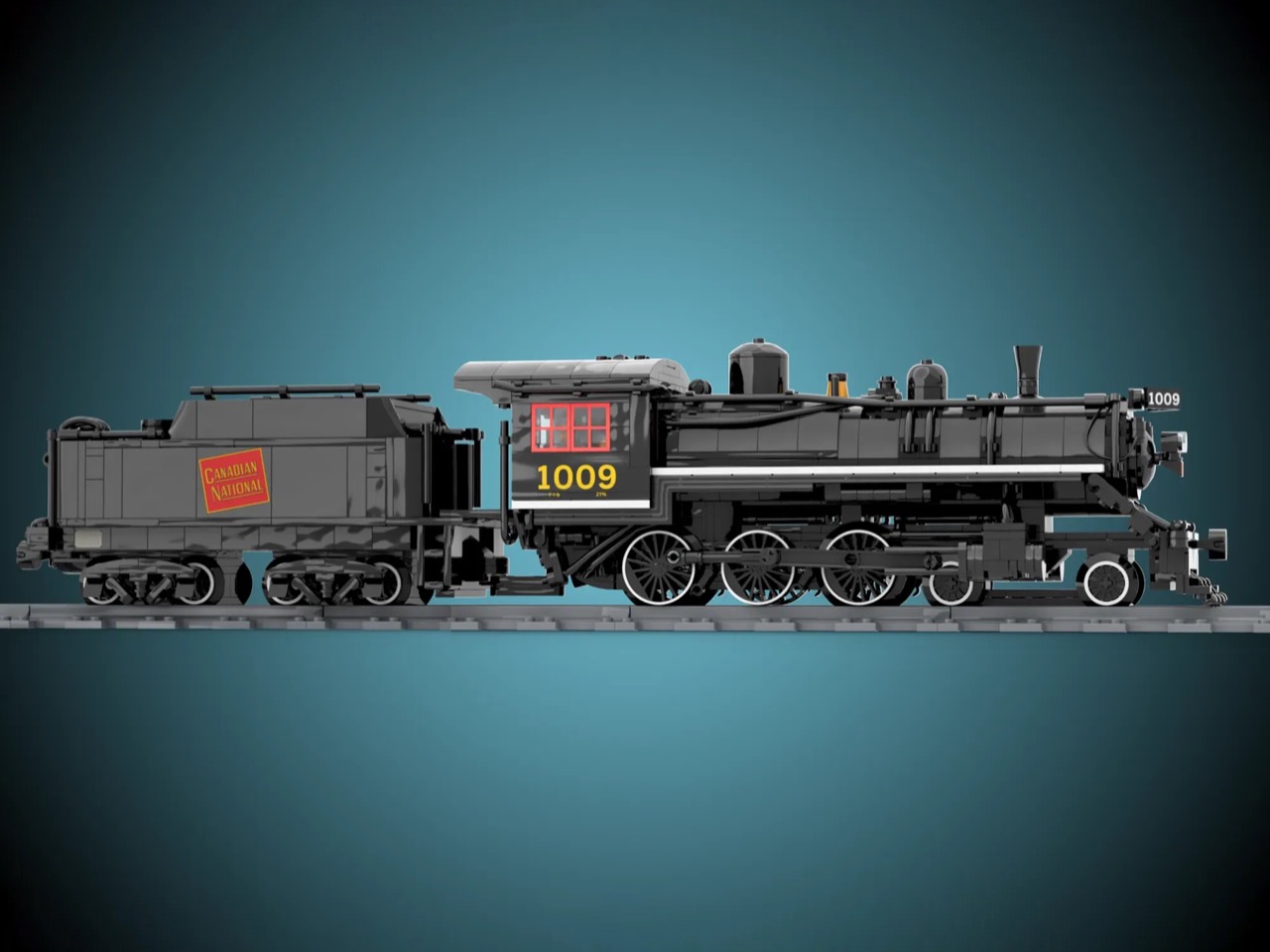
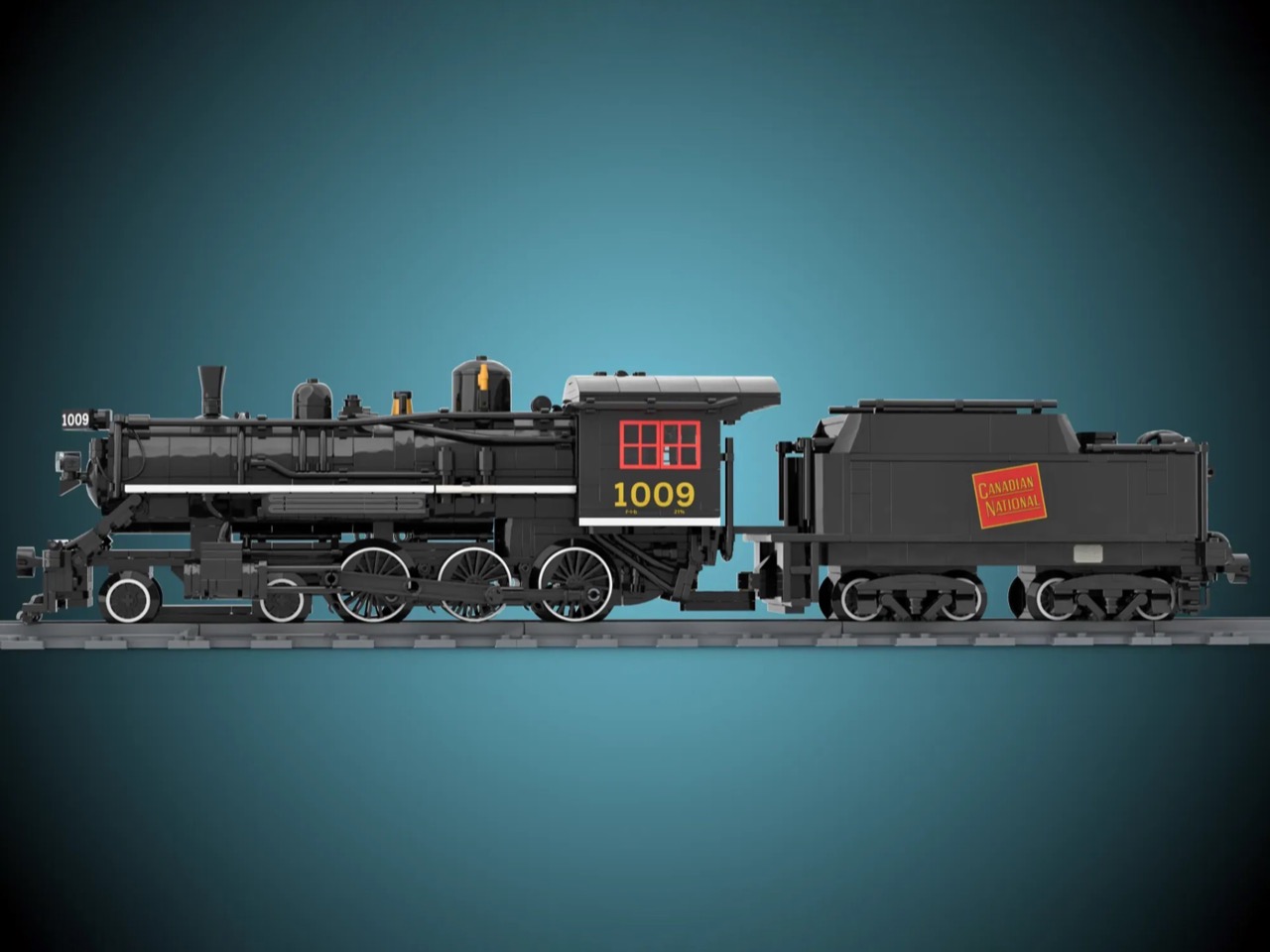
Now, the elephant in the room: will LEGO ever actually produce this? The Ideas platform is a graveyard of brilliant concepts that get buried under licensing red tape or LEGO’s baffling insistence on playing it safe. But if there’s any justice, this one should make the cut. It’s got history, it’s got mechanical charm, and it’s got the kind of broad appeal that could pull in train nerds, LEGO collectors, and even casual builders who just want something cool on their shelf. The fact that it’s designed to run on LEGO’s powered track system means it’s not just a static display piece; it’s a functional model that could slot into an existing layout without looking out of place. And let’s be real, LEGO’s own train offerings have been phoning it in for years, recycling the same old European-style locomotives while ignoring the rich history of North American railroading. If you love this build and want to see it hit the shelves, you can vote for this MOC (My Own Creation) on the LEGO Ideas website.
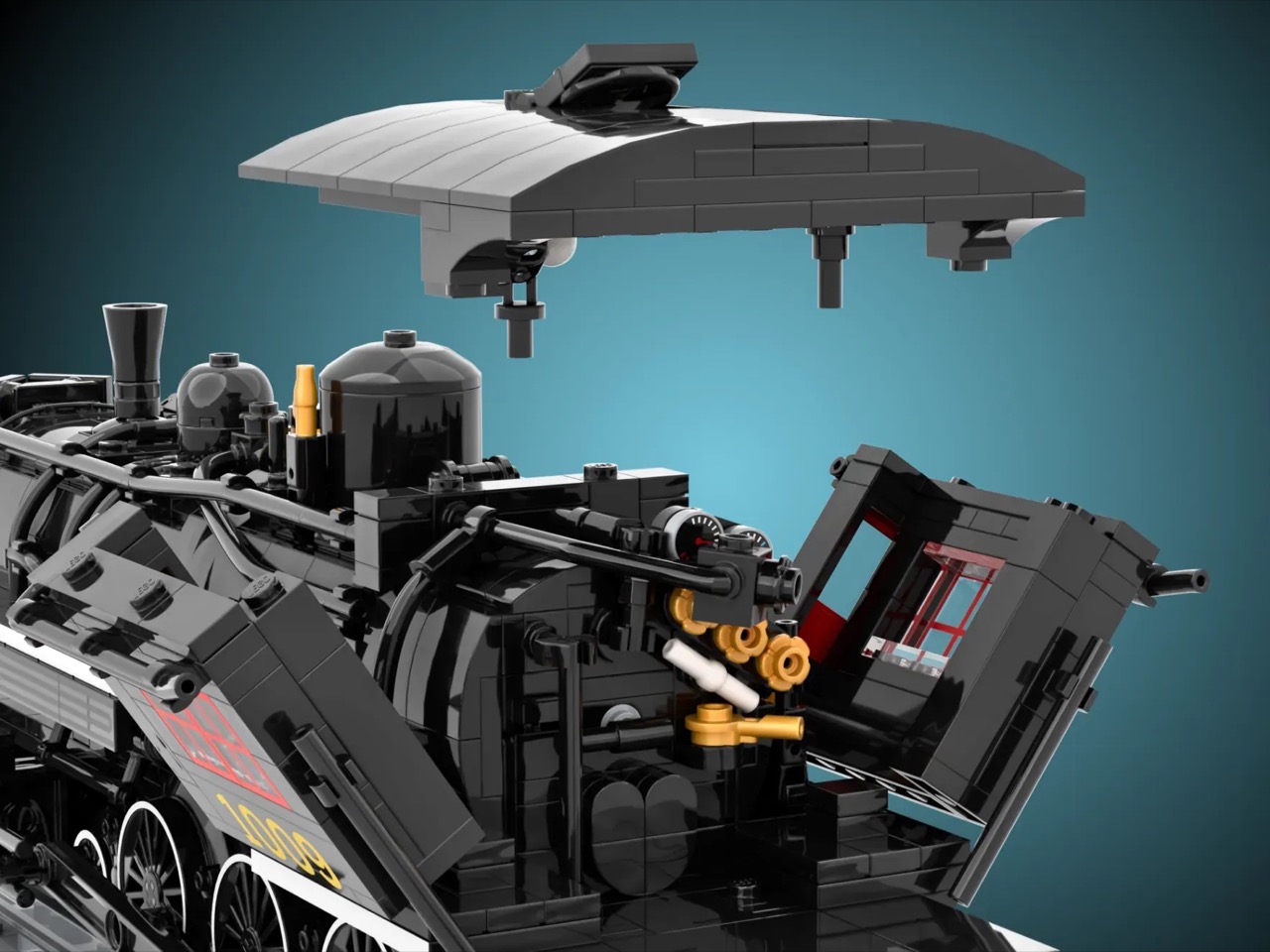
What’s really impressive is how the builder balanced accuracy with playability. The side rods move, the wheels turn, and the boiler even opens up, a feature that’s as satisfying as it is unnecessary. It’s the kind of over-engineering that defines the best LEGO models, where the creator doesn’t just meet the brief but goes out of their way to add layers of interaction. And yet, despite all the moving parts, the thing still looks clean. There’s no awkward gap where the rods connect, no misaligned panels, no corners cut in the name of “it’ll probably be fine.” It’s precise, deliberate, and most importantly, it works as both a display piece and a functional train.
The post The Forgotten Canadian Locomotive Just Got Reincarnated As An Incredible LEGO Model first appeared on Yanko Design.
Read More . . .|
 | Tweet
| Tweet